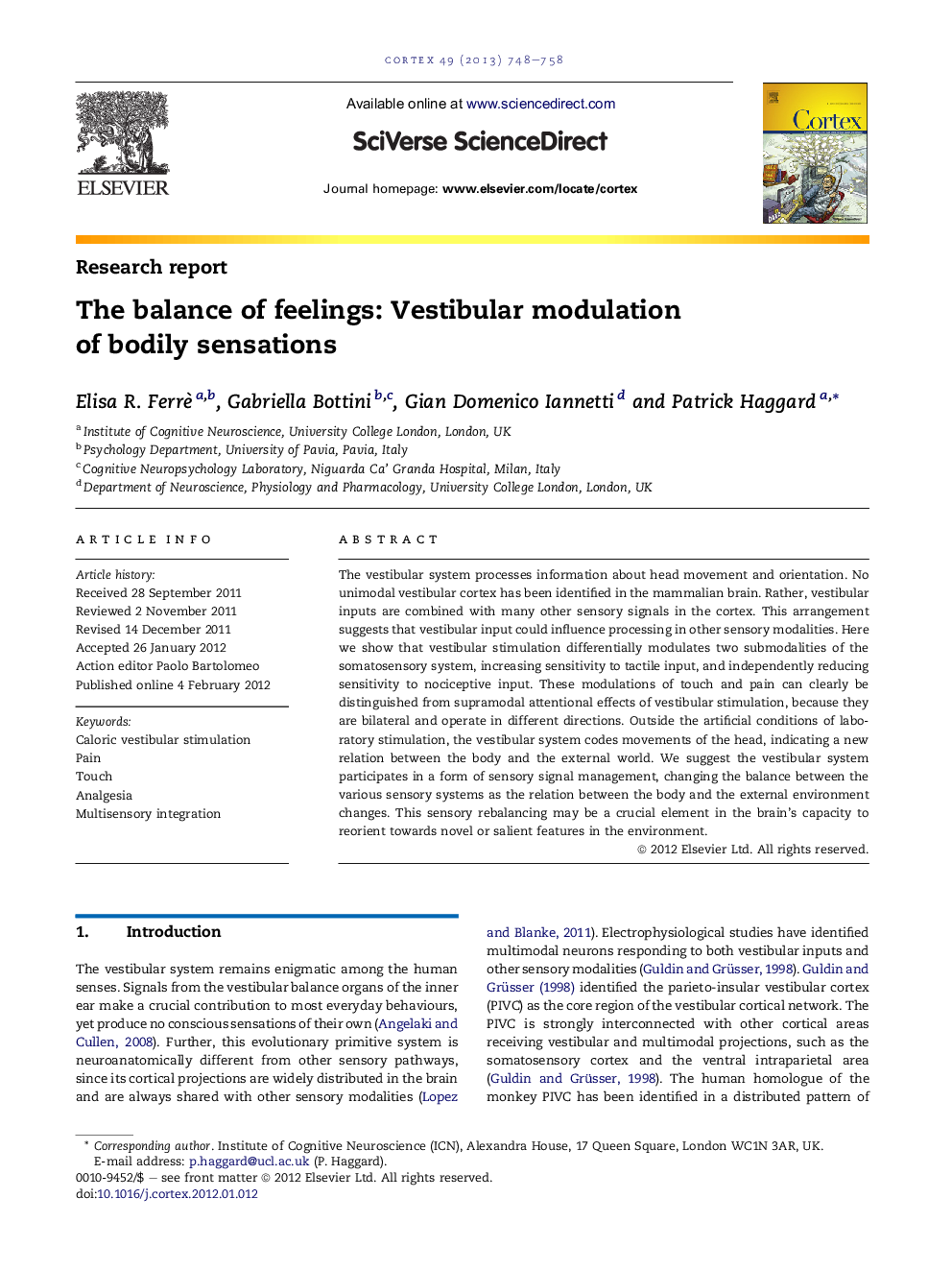| Article ID | Journal | Published Year | Pages | File Type |
|---|---|---|---|---|
| 10463219 | Cortex | 2013 | 11 Pages |
Abstract
The vestibular system processes information about head movement and orientation. No unimodal vestibular cortex has been identified in the mammalian brain. Rather, vestibular inputs are combined with many other sensory signals in the cortex. This arrangement suggests that vestibular input could influence processing in other sensory modalities. Here we show that vestibular stimulation differentially modulates two submodalities of the somatosensory system, increasing sensitivity to tactile input, and independently reducing sensitivity to nociceptive input. These modulations of touch and pain can clearly be distinguished from supramodal attentional effects of vestibular stimulation, because they are bilateral and operate in different directions. Outside the artificial conditions of laboratory stimulation, the vestibular system codes movements of the head, indicating a new relation between the body and the external world. We suggest the vestibular system participates in a form of sensory signal management, changing the balance between the various sensory systems as the relation between the body and the external environment changes. This sensory rebalancing may be a crucial element in the brain's capacity to reorient towards novel or salient features in the environment.
Related Topics
Life Sciences
Neuroscience
Behavioral Neuroscience
Authors
Elisa R. Ferrè, Gabriella Bottini, Gian Domenico Iannetti, Patrick Haggard,
